Energy! Energy! Reflecting on grime’s legacy with two people who witnessed its birth

A witness to grime's ferocious infancy, photographer Simon Wheatley has since been tapped by Hennessy to judge the Championing Scenes category at the Abbey Road Studios Music Photography Awards. Nearly two decades on from his original work, he reminisces with friend and musician Hak Baker on grime's golden era.
In partnership with Hennessy
Words: Yemi Abiade
Photography: Simon Wheatley

Hak Baker and Simon Wheatley know the Alpha Place Community Centre all too well. In the early 2000s, the centre, found in the heart of the Isle of Dogs, East London, was a sanctuary for youngsters and a breeding ground for would-be MCs in the midst of grime’s inception. Baker, a local boy – his mother still lives a stone’s throw away and he attended Seven Mills Primary School around the corner – witnessed it first-hand, watching veterans Dizzee Rascal and Trim perform there for the first time, sowing the seeds for his own brief career as a grime MC. “That inspired me to write bars, or at least try to,” Baker recalls with a smile. Meanwhile, Wheatley, a budding photographer at the time, captured this subculture from behind the lens of his camera, material that would later grace his epic 2011 anthology Don’t Call Me Urban! and his new book Lost Dreams.
Everything and nothing around the larger Alpha Place estate has changed; its surrounding skyline is shrouded by the pristine heights of newly-built private apartments and the JP Morgan building in nearby Canary Wharf. Alpha Place’s proximity to London’s commerce capital has long been a painfully ironic symbol for grime’s children and poorer residents; so close, yet so far, a physical immediacy, but a socio-economic gulf many fail to cross. A solid sense of community though, bordering familial, is still in place. “Everyone knows each other here,” Baker says, beaming with pride. “It’s tightly knit. Everyone supports one another however they can.”
This spirit has bonded Baker and Wheatley for nearly two decades. With an age gap of over a decade, they first met in 2005 at a video shoot for Roll Deep’s grime classic When I’m Ere in Limehouse, East London. “I think a lot of them thought I was quite dodgy at first,” Wheatley remembers, acutely aware of the suspicion his presence may have garnered at the time as someone who was a seeming outsider to grime culture. “I knew it was a photoshoot, I wasn’t worried,” Baker retorts, despite being just 13 years old at the time. Wheatley would take several photos of Baker and his crew, the B.O.M.B. Squad, over the following years before they lost touch after Wheatley moved away from the UK. Upon his return, and Baker’s release from prison in 2016 and transformation into a guitar-wielding indie star, the two would reconnect, resuming a friendship as resilient as grime itself. Kicking off Lost Dreams is a poem by Baker, an emotional release Wheatley holds dear.
Both talents were recognised in May by the inaugural Abbey Road Studios Music Photography Awards in association with Hennessy – a celebration of the art of music photography – with Wheatley recruited by Hennessy as a guest judge in the Championing Scenes category and Baker performing live. Returning to Alpha Place, where it all began for them, THE FACE caught up with Baker and Wheatley to discuss their friendship, grime’s first coming and its impact on British youth culture.

Simon, you’ve been documenting subcultures for a while and Hak, you were involved in early grime, too. Can you paint a picture of how you met?
Hak: It was at a Roll Deep video shoot for When I’m Ere in Limehouse. We’re all local and everyone knows each other so we were there chilling and Simon came up and was taking photos of Roll Deep. One of the older boys saw Simon, took interest in what he was doing and took his number to basically say: “Come to the Isle of Dogs, see what we’re about.”
Simon: When I look back on my pictures of Hak from that day, and he’s in a fair few, I remember that we didn’t actually speak. I think a few of them thought I was a bit dodgy. How did you feel when you first saw me?
Hak: I wasn’t really bothered.
Simon: You had a bit more awareness of what was going on. You knew it was a video shoot so you weren’t as paranoid. Some people were, though. But then when word spread that I was working for RWD Magazine, which I wasn’t at that time but I had met Roll Deep through RWD, everyone was cool with me. I went to the Isle of Dogs the following Saturday and spent the afternoon with Hak and his friends on radio that night until about 2am. It was an adventure.
Did you feel like an outsider initially?
Simon: Always. To me, being an outsider is a fundamental aspect of being a photographer. I think that’s why I became a photographer because I didn’t fit in anywhere. A camera gave me something to do and my friend’s darkroom gave me that inner space where I could find myself in my early 20s.
What first led you to document grime?
Simon: When I first heard grime, I was wowed. It had that raw, unfiltered energy from the streets. I’d been photographing the inner city for about four or five years but I hadn’t experienced that hunger. Grime at the time was a very hungry sound. You can see it in the pictures and in the youth clubs; everyone’s grasping for that moment and it fascinated me.
Hak, what led you to make grime music at the time?
Hak: We were always outside the youth club and that’s where I first started seeing people MCing, like Trim and Dizzee. This is two minutes away from my mum’s house and it was just like: “what the hell is this?” I’d never seen it before. I must’ve been around 11 or 12. But then I went home and started writing lyrics. Musically, grime felt like it was our thing. It gave us freedom to be ourselves.
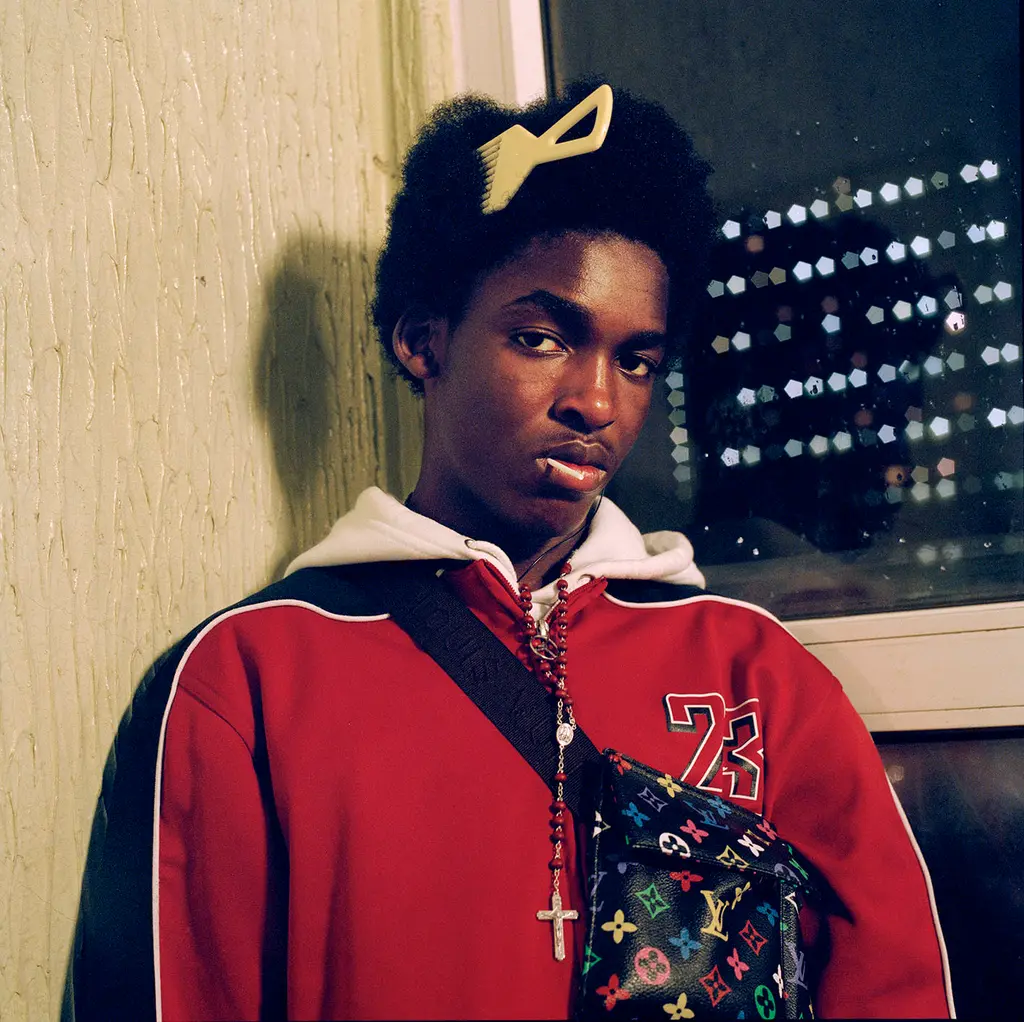
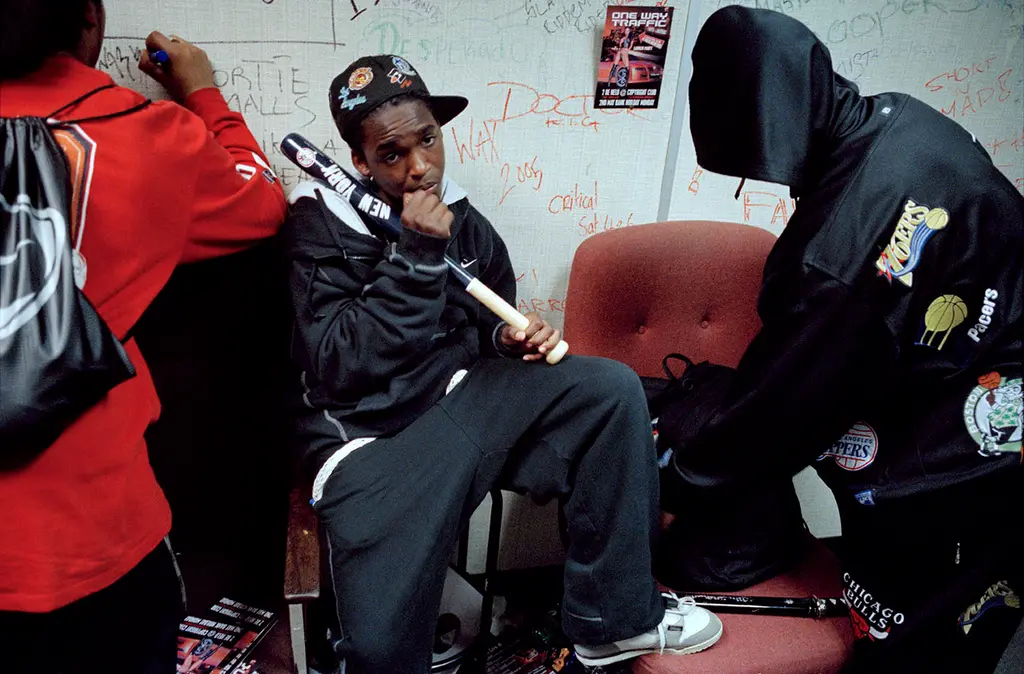
What did that energy feel like back then?
Hak: It was unlimited. Relentless. Limitless. It never stopped. It was so fast, but when you’re young you can keep up with it. You took everything in your stride and we were reactive to a lot. I’m kind of the same way still, burning both ends of the candle, but you could afford to back then.
Simon: The nights lasted forever because the energy never stopped. [Grime] was a nocturnal genre. Especially with the sets you guys used to do in the nighttime and, even then, after the set, you’re up at three in the morning tuning into radio stations. Hak talked about the ambition and the hunger, but for me, it was when Dizzee Rascal won the Mercury Prize that it was suddenly tangible. People did have something to aim for: grime wasn’t just an underground dream anymore. How did you feel when that happened? Were you a fan of Dizzee?
Hak: Yeah definitely, but I didn’t know what it meant or what the Mercury Prize was. I knew Dizzee had made it, but it didn’t bear that much significance for me at the time. When people say he won the Mercury, to me it just looked like he was on the telly and doing well. That was good enough for us. It’s funny because I want to win a Mercury now.
Simon, in your book Don’t Call Me Urban!, how important was it for you to place grime culture in its wider social context – gentrification, the demonisation of the working class by New Labour – rather than in isolation?
Simon: I think the book’s the evidence. Don’t Call Me Urban! is an attempt to look through the perceived glamour of the “Black is cool” trope, to look at the reality of what it was back then. To take “urban” culture and strip away the glamour from it.
How do you see the word “urban” in 2022?
Hak: It’s a good title for that book. I don’t really like that word to describe Black people.
Simon: Lazy, isn’t it?
Hak: I hate that word.
Simon: I remember Flowdan asking “and what’s rural music?”
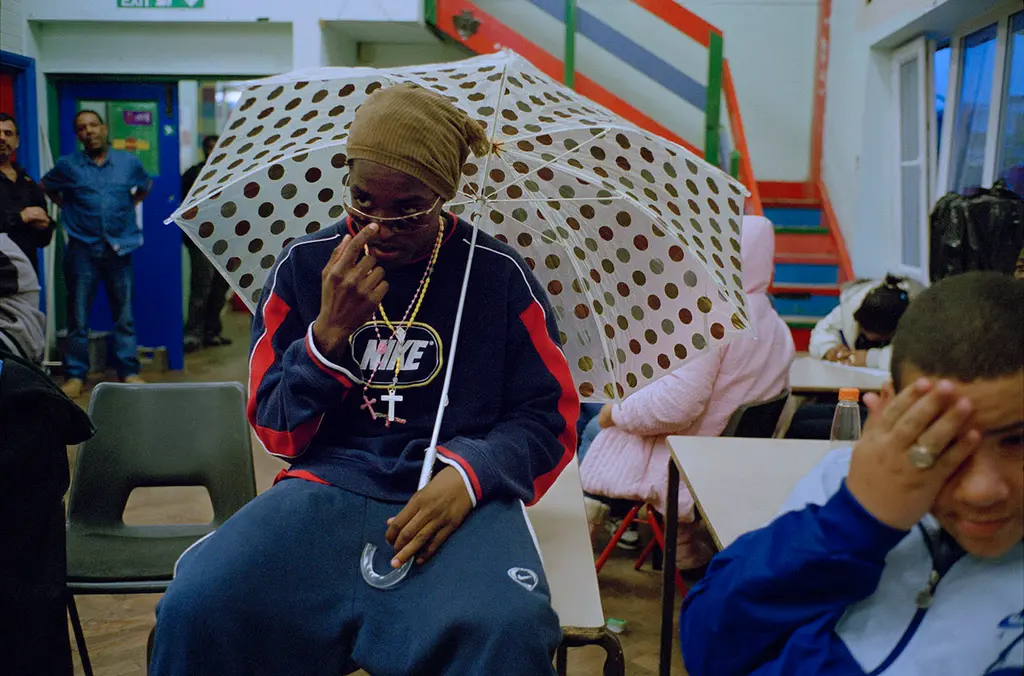
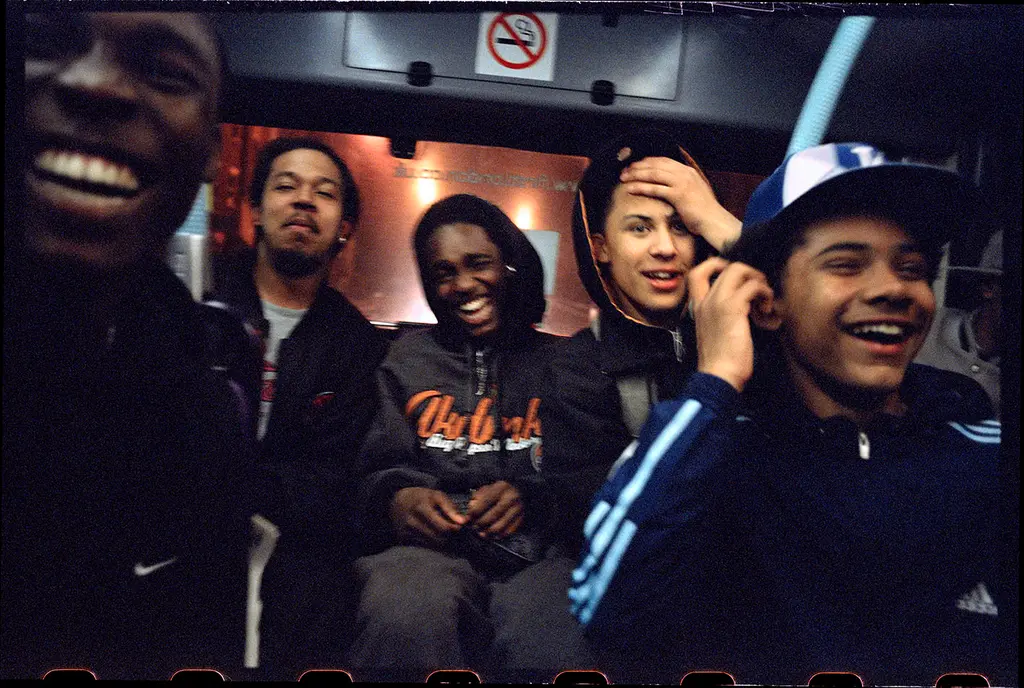
You guys reconnected in 2016 after Hak got out of jail. Was it a case of picking up where you left off?
Simon: I’d come back from India and Hak messaged me somehow. Initially, I thought: “What, him?” Obviously, there was that age difference when we were younger, but when I went around to see him and he showed me what he’d done since, it was quite fascinating. It was like picking up [where we left off] again but he wasn’t that hyped youth any more. On his fifteenth birthday, an incident happened and I decided I didn’t want to hang around too much anymore. It actually really hurt him. I didn’t realise that. So these sweet moments appear retrospectively [in the book]. There was always some tenderness that Hak had towards me and in his copy of Lost Dreams I wrote: “Thanks for the warmest welcome.” That was the first copy I’d given to someone.
What do you think are each other’s greatest qualities?
Hak: Simon truly cares about things. He doesn’t do things without having a thought behind them. He’s very considerate and it shows in his work.
Simon: For me, it’s the honesty and the sincerity of the man, really. He’s always done what he wants to do and talked about music being his freedom. He’s never going to sell out to anyone, even though he probably should go mainstream and I think he will do, but he has that shining artistic integrity. I’ve learned a lot from Hak about how to handle myself and how to toughen up as a human being while at the same time retaining that sweetness of soul.

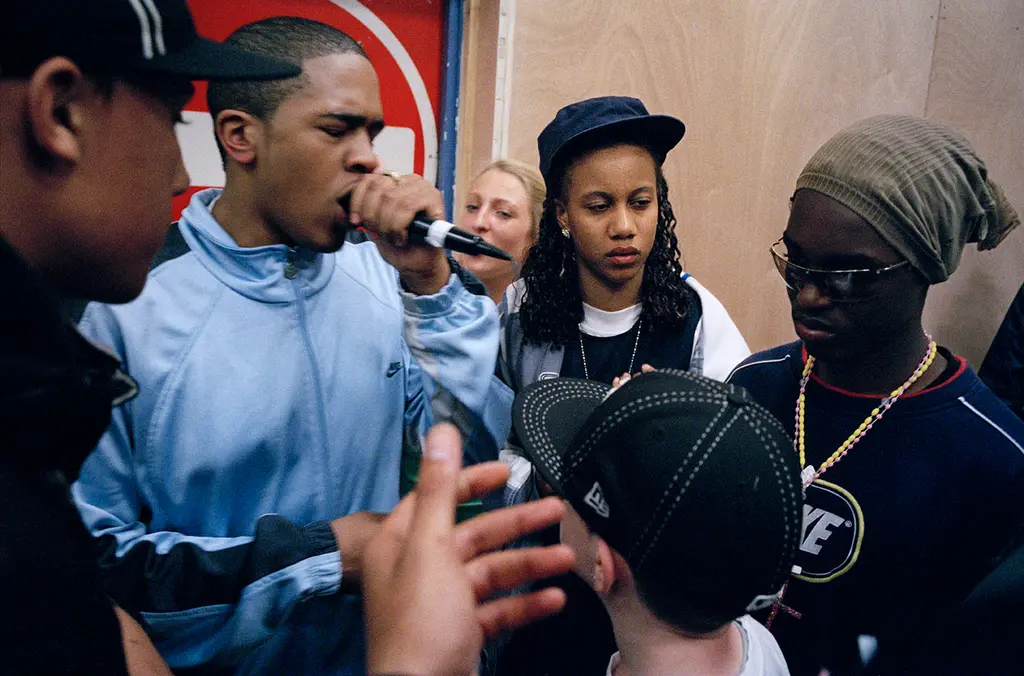
Simon, what inspired you to want to revisit your catalogue for Lost Dreams and Hak, how did you become such an integral part of that?
Simon: I think he’s a dynamic force within Lost Dreams, which has taken years to put together. I first looked at the contact sheet because of DJ Target and his book Grime Kids. This was 2017, which was the summer that I was getting to know Hak again. I was back in London and I spent a lot of time with him, went to the studio with him. As I was editing those pictures, I’d be sending him stuff and just having that growing friendship with him while I was editing… photography is a very lonely game, at least as I’ve known it to be. So, to go into the archive and look for that work knowing that he’s around on the other end of the phone to send a WhatsApp picture to was an important part of the process. And of course, he wrote that quite brilliant poem [at the beginning of Lost Dreams], just like that. But again, that’s Hak, he can deliver off-the-cuff without thought, which is a sign of genius.
Hak: I was fucking obsessed with my past, completely obsessed with how much fun and how wild it was.
Simon: I had to release this book because of him and his friends, and how much it means to him.
Hak: Especially growing up around here as well, it’s different and it makes you enjoy those times even more. Me and my friends can’t really get over it; we’re plagued by it. It was crazy.
What do you think some of the biggest misconceptions about grime culture are?
Hak: That it was violent. We would go to the youth club and that’s where you would meet the boys from Bow, Bethnal Green, Hackney, Forest Gate, Essex, meeting new people but no one’s fighting. Very rarely would there be altercations. That time was actually very respectful; we always tried to respect the place, even at the radio sets we could say horrendous things to each other but it was never personal. Those connections allowed a lot of people to progress in that environment of Black entertainment. Through some of those people doing songs together, working together, people are making things happen and are successful today. Those times were very necessary for that.
Simon: It was a community. Looking at it from the perspective of somebody who was also involved with the second generation of grime in 2014 – 15, like Novelist and The Square. When I’d go to events and I’d see all the kids at the front – the kind of Shoreditch, Dalston types – I never got the sense that they understood just how much of a struggle it was in those early days. You’d generally get lots of white kids at the front moving and at the back you have more of the Black people who can feel it in their bones a bit more, recognising the music on a different level.
On the flip of that, have we ever been able to move past the first grime era?
Hak: I think we have. We’ve got people like AJ Tracey, Aitch, Big Zuu. They’re an example of new-era grime. Everything they do in their careers will always be linked to grime.
Simon: I think some from the first generation who maybe didn’t make it through [as artists] might want to keep things in the past to maintain their relevance.
Hak: Or even to try and do something now. Digging up the old stuff and not trying to reinvent themselves.
Simon: A bit romantic.
How much importance do you place on that early grime era when it comes to what youth culture in the UK is today?
Hak: Everything.
Simon: Yeah, it’s enormous, isn’t it? Grime is when the UK found its self-confidence.
Hak: Look at how people talk now. It’s all derived from grime. The way people dress – today that old fashion is back in style. That’s come from the mandem of before.
Do you think grime gets the recognition it deserves in that regard?
Hak: From the people that know.
Simon: But maybe not from the younger generation. It seems to be at the bottom now, some might not even know what it is.
Hak: But nothing can give you a buzz like an old school set, it’s mad.
Simon: For all the soulfulness Hak has now, he still has that energy in his blood.
Hak: It’s in my DNA, man. The things I do and the way I expect people to act, that all comes from that era. There were more morals back then and people would just be nice. Nothing would have happened in those days if people didn’t come together. It was always family business, this MC-ing thing.
What are some of your fondest memories from that era?
Hak: Going to Ontop FM on some mad estate in Oval when I was in school and MCing with the South Soldiers. It was just like, “Rah, am I really here doing this?” I’ve seen bare of Simon’s photos, a lot of those moments I’d forgotten about, but I was able to get those memories back because I saw them.
Simon: An incident at Devon’s Road. There are pictures of Hak and his friends laughing and smiling, and then next thing you know, people are on the phone and they’re organising some fight in the field. I think I made three exposures because I had a flash [on my camera] and thought I might get a knife in my back. It was nuts and Hak was on the frontline that night.
Hak: But back then you could still have straighteners [fights that settle arguments]. That’s how it was. I had bare straighteners and I won them all as well.
Simon: I’ve got the evidence.
Simon, what’s one piece of advice you’d give to photographers documenting subcultural music scenes across the globe?
Simon: I think authenticity is all you can do, really, whether you’re a photographer or a writer. Hak’s a great example of someone following their own independent path in terms of originality. In a way, photography is an important means of translating your feelings. So, if you can, hold on to that principle, just go with your feelings and let the photography take care of itself. I think that’s the surest path.






